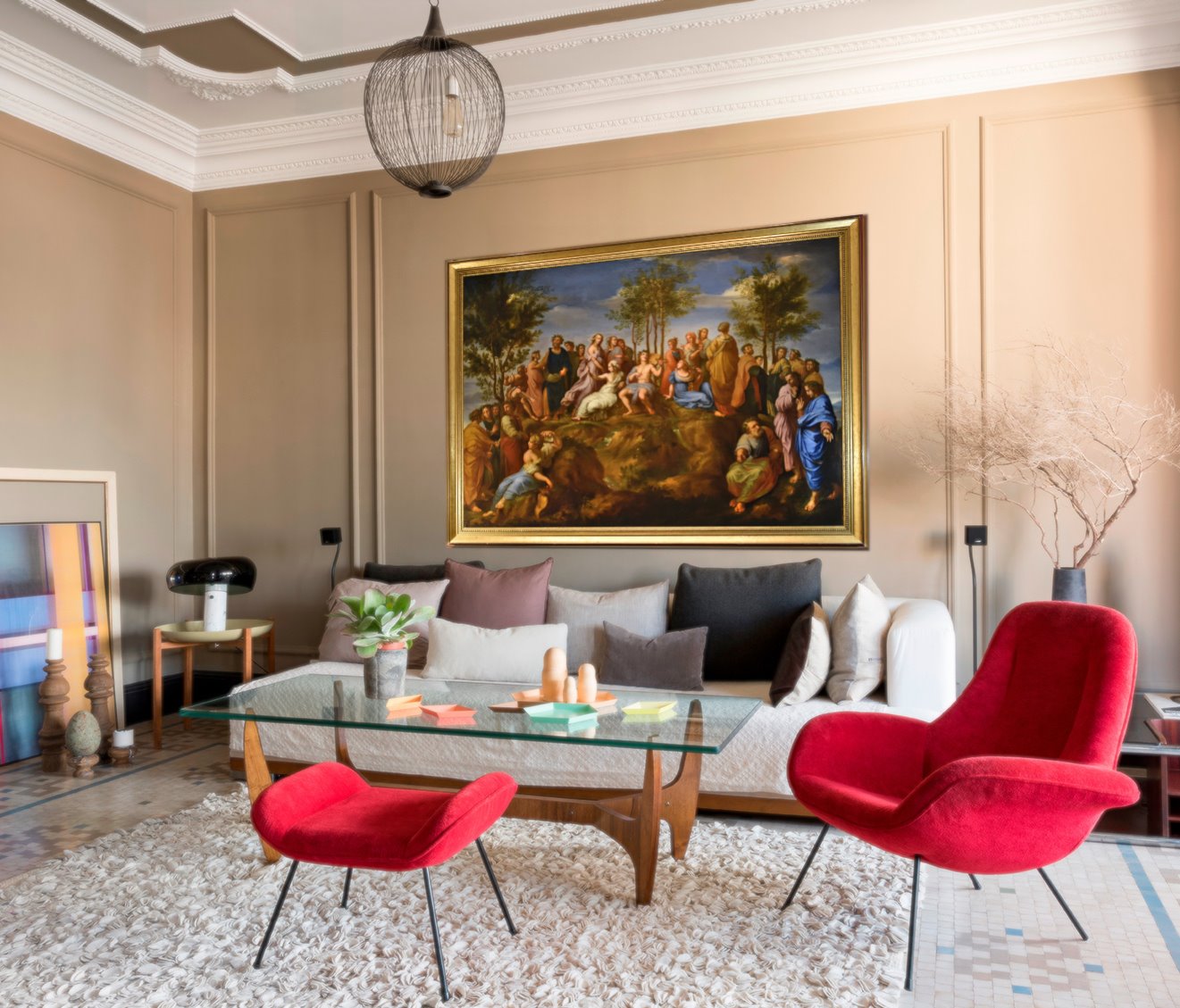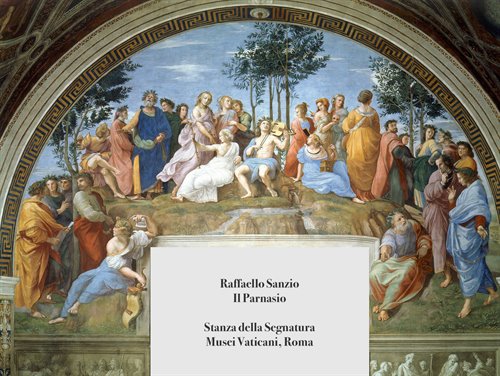Raffaello Sanzio (Urbino, 1483 - Roma, 1520) (seguace di)
The Parnassus with Apollo and the Muses
RAFFAELLO SANZIO (Urbino, 1483 - Rome, 1520), follower of
The Parnassus with Apollo, the Muses and ancient and modern poets
17th-18th century
Oil on canvas
123 x 173 cm
framed 137 x 187 cm.
This refined painting, of considerable size and great scenic effect, is a derivation of Raphael Sanzio's famous fresco depicting Mount Parnassus, datable to 1510-1511 and located in the Stanza della Segnatura, one of the four Vatican Rooms.
The meaning of the subject was to celebrate humanistic culture, a sort of allegorical representation that saw both the figures of myth and those of the greatest authors of the past side by side in the same space.
The scene, enveloped in a lyrical atmosphere, is set on Mount Parnassus, near the fountain Castalia, for Greek mythology the home of the Muses, where ancient and modern poets are depicted.
The painting, which rather faithfully reproduces Raphael's piece with perfect harmony and great pictorial quality, is the work of an Italian author active between the 17th and 18th century. We can see the careful balancing of the light, which brings out its chromatic brilliance, and the accentuated sculptural relief that the author gave to the figures, as well as the very faithful rendering of the individual pictorial details of the figures.
At the centre of the composition stands the main figure of the god Apollo, crowned with laurel and seated on a rocky boulder intent on playing the lyre from his arm, surrounded by the nine Muses: at his side Calliope with the sceptre (muse of epic poetry) and Eratro with the lyre (muse of choral singing and love poetry); Behind them on the left are Thalia (muse of comedy), Clio (muse of history) and Euterpe (muse of music), while on the right are Polyhymnia (muse of dance and sacred song), Melpomene (muse of tragedy), Terpsichore (muse of song and dance) and Urania (muse of astronomy and geometry).
Arranged as if in an auditorium, all around are eighteen ancient and modern poets divided into several groups, linked to each other by gestures and glances, forming a sort of continuous crescent that projects towards the spectator as if to envelop him.
At the top we can find the poets of classical and medieval epics, on the left the young Ennius, listening to the song of Homer (blind), followed further behind by Dante, who looks towards Virgil, who in turn addresses Statius next to him.
Below, again on the left, is the group of lyric poets, with the poetess Sappho holding a paper with her name written on it, and again Piandaro, Catullus (or perhaps Tibullus), Horace and Petrarch.
On the opposite side at the top of the painting are other modern poets, who have often created identification disputes. The most controversial figure is the first, for whom the identification of Ariosto or, according to an alternative hypothesis, Michelangelo has been proposed. Then follows Giovanni Boccaccio (second in profile), while the others have been identified as Plautus with Terence (old man in profile and young man turning to look at him) and finally Jacopo Sannazzaro.
On the bottom right are the three great Greek tragedians, Aeschylus the elder seated, Sophocles and Euripides the younger.
ADDITIONAL INFORMATION:
The painting is completed by an attractive gilded wooden frame and is sold with a certificate of authenticity and descriptive iconographic card.
We take care of and organise the transport of the purchased works, both for Italy and abroad, through professional and insured carriers.
Contact us for any information, we will be happy to answer you.
Follow us also on :



